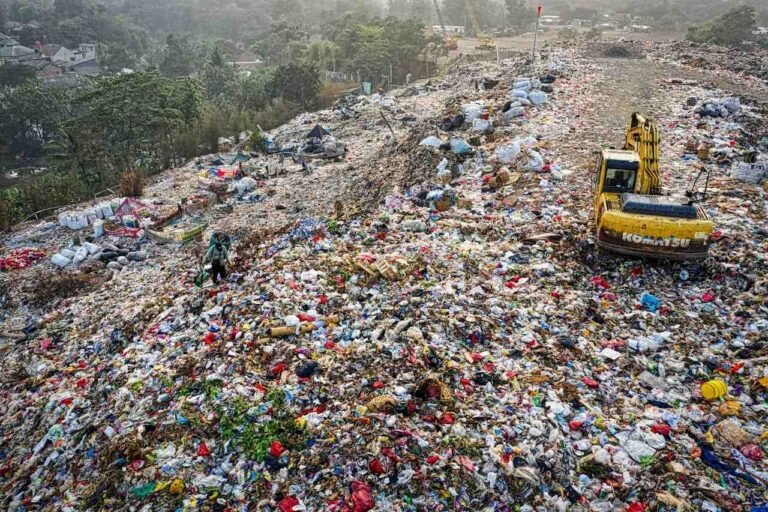Forest Soils are Catching Plastic From the Sky — A New Study Shows
For years, we have thought of plastic pollution as something that washes into rivers and beaches, or litters roads and fields. New evidence now shows forests — places we usually associate with clean air and healthy soil — are quietly collecting plastic that falls out of the atmosphere. According to a 2025 study in Communications Earth & Environment, researchers found measurable microplastic particles in every soil layer from leaf litter down into mineral soil, and they showed that those particles arrive mainly from the air and from leaves that drop to the forest floor.
The research — carried out at four temperate forest sites near Darmstadt, Germany — used a new extraction method to measure microplastics larger than 20 µm in organic and mineral horizons. The team reports mean concentrations across samples of about 4,440 particles per kilogram of dry soil (±3,690), and they modelled throughfall — the particles washed off canopies by rain or delivered via leaf-fall — as a major input pathway stretching back to the mid-20th century. In short, the canopy acts like a comb, scouring plastic from the air and passing it to the soil below.
This is not an isolated finding. Other field studies and reviews over the last decade have repeatedly shown that the atmosphere is a working highway for microplastics. Modelling and monitoring work has shown particles produced by traffic, tyre wear and many urban sources can travel large distances in the air and deposit far from their original source.

Table of Contents
- What the Study Found and Why it Matters
- Voices from the field and expert perspectives
- What this Means — and What we Can Do
What the Study Found and Why it Matters
The Darmstadt team reports three simple but important results. First, microplastics are present across forest soil horizons, with especially large stocks deeper in mineral horizons — even though the particles initially land in leaf litter. Second, measurements of deposition (throughfall) and the chemical fingerprints of particles in soil and deposition samples match closely, supporting the idea that most forest soil microplastics originate from the air. Third, when the authors modelled deposition back to about 1950, they concluded that atmospheric inputs over decades can explain a great proportion of what now sits in soils.
Numbers help make this concrete. The study calculated particle stocks ranging from hundreds to nearly a million particles per square metre, depending on site and depth; throughfall deposition measured during sampling averaged about 9.1 particles per m² per day but varied strongly in space and time. These are measurable flows that, over the years, add up to large stores.
We can compare that to other field work. A recent study in South Africa that monitored urban, rural and forest sites reported deposition fluxes that ranged roughly from 90 to 356 particles per m² per day in different settings, with an overall daily average in their campaign of about 212 particles per m² per day — a very different sampling method and particle size range, but it reinforces that deposition rates differ by location and can be high near people.
That pattern — atmosphere as a conveyor — is backed by global modelling that shows airborne microplastics can move to remote regions (mountains, polar zones, forests) and deposit there. That long-range transport means even protected or remote forests can act as sinks for plastics released many kilometres away.
Key figures (case-study snapshot)
| Metric | Finding |
|---|---|
| Mean forest soil concentration (study sites) | ~4,440 particles/kg dry soil |
| Throughfall mean during sampling | 9.1 particles/m²/day |
| Deposition range elsewhere | 90–356 particles/m²/day; average 212 particles/m²/day |
| Green roofs interception (urban example) | 97.5% capture of deposited microplastics; estimated 56.2 tonnes/year intercepted by existing green roofs in Shanghai |
Voices from the field and expert perspectives
“Forests are good indicators of atmospheric microplastic pollution,” says Dr. Collin J. Weber, the lead author on the forest soils paper. “Our results indicate that microplastics in forest soils originate primarily from atmospheric deposition and from leaves falling to the ground. Other sources have only a minor influence.” That quote comes directly from the university press and media coverage summarising the study.
Weber’s words matter because they come from someone who has developed laboratory approaches to separate and chemically image tiny plastic particles from complex forest litter and soil. His team’s technical advance matters: past surveys often missed the smallest particles or ignored organic leaf horizons, which meant we were partly blind to how forests trap plastics.
Another voice comes from a different angle — an urban solution that shows how human design can intercept airborne plastics before they travel. A separate study tested green-roof modules and found they removed over 97.5% of microplastic particles in simulated rainfall; the authors estimated that the modest area of green roofs in a megacity like Shanghai could intercept on the order of 1.7 × 10¹² particles (~56.2 tonnes) annually. That finding shows both the scale of the problem and the potential for infrastructure to reduce fluxes.
Context from global reviews and UN assessments matters too. The United Nations Environment Programme has repeatedly warned that micro- and nanoplastics are a global concern and that atmospheric transport adds a pathway by which particles reach remote ecosystems and people. UNEP’s surveys and assessments lay out the policy and health questions that follow scientific detection: if tiny plastics are moving through the air and landing in soils, we need to understand exposure, ecological impacts and possible policy responses. A report by the United Nations Environment Programme in 2021 found rising concern about microplastics in multiple compartments of the environment and urged more monitoring and action.
What this Means — and What we Can Do
The idea is simple: forests are not immune. Plastic particles in the air, from near and far, are ending up in tree canopies, on leaves, and underfoot in soils. That raises multiple worries. Microplastics can change soil structure, affect water and nutrient cycling, interact with soil microbes, and (potentially) affect plant growth and animal health. The paper highlights that we now have measurable stores and depositional pathways to study ecological consequences — and that those stores likely reflect decades of diffuse atmospheric input.
So what can be done? At least three practical threads emerge from the science and from recent applied work:
First, reduce emissions at the source. Traffic (tyre and brake wear), industrial releases, and mismanaged plastic waste increase airborne plastic. Policies and technologies that reduce those emissions will lower atmospheric loads over time. Global modelling and measurement studies underline that reducing urban and transport-related particle emissions can cut long-range transport.
Second, intercept particles where we can. The green-roof study shows that well-designed vegetation and soil systems capture a very high proportion of deposited microplastics in simulated rain. Urban planners, architects and stormwater managers can expand vegetated surfaces, porous green infrastructure and treatment systems to trap plastics before they re-enter waterways or travel further.
Third, monitor and research the impacts on soils and forests. The Darmstadt work is a methodological and conceptual leap, but it also highlights gaps: we need long-term monitoring across forest types and climates, studies on how plastics affect soil organisms and nutrient cycles, and assessment of human exposure pathways where soils interact with food production and recreation. The UN and multiple scientific reviews stress the need for cross-disciplinary monitoring and for standardised methods so global patterns can be compared.
Fourth, public awareness and local action matter. Forest users — hikers, municipal foresters, conservation groups — can advocate for better waste management, support urban greening that intercepts airborne particles, and back policies that curb plastic emissions. Researchers on the ground, like Dr. Weber and colleagues, can be powerful storytellers: their field notebooks and sample bags document the coming together of atmosphere and forest in a way that numbers alone do not.
Conclusion
The discovery that forest soils are storing plastic that fell from the sky is at once unsettling and clarifying. It tells us where the particles go, how they travel, and — importantly — where solutions can be targeted. According to the principal study used in this article, forests act as a visible record of airborne microplastic pollution; according to global modelling and UN analyses, the problem is widespread and solvable through a mix of emission cuts, design interventions, monitoring and policy.







